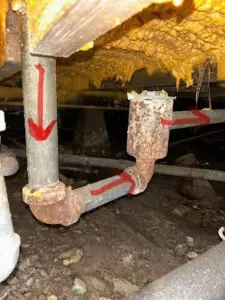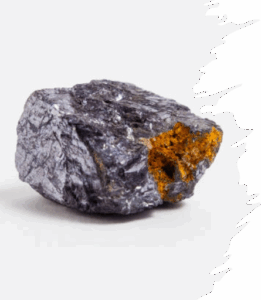About Envirosult
Support Us
To contribute via ACH, cryptocurrency, stocks, or bonds, please email us at
Older Homes, Lead Piping, What to do

https://www.nsf.org/consumer-resources/articles/lead-schools-older-homes

https://www.ldh.la.gov/assets/oph/Center-EH/engineering/LCR/Lead_Pipe_Identification.pdf
https://www.epa.gov/ground-water-and-drinking-water/lcri-questions-and-answers
Lead pipes were used in houses from the late 1800s through much of the 20th century, with a nationwide ban on new lead pipes taking effect in 1986. However, they are still present in many older homes, particularly those built before 1986, and can also be found in older water systems and older fixtures with lead solder.
When lead pipes were used. Late 1800s to mid-1900s. Lead pipes were common for water service lines connecting water mains to homes, and for internal plumbing. Commonly until the 1950s. Lead pipes were widely used until this time, though copper and other materials began to be used more frequently. Allowed until 1986. The federal government banned the use of lead in new plumbing systems in 1986, but existing lead pipes were not required to be replaced. Still present today. Many older homes, especially in older cities, continue to have original lead pipes and service lines.
How to check for lead pipes. Scratch test. To see if a pipe is lead, scratch it with a coin or key. If the scratch is dull gray, and a magnet will not stick to it, it could be lead. Galvanized steel is dull gray, but a magnet will stick to it. Look at the age of the home. Homes built before 1986 are more likely to have lead pipes. If your house was built before 1978, it's more likely to have lead paint as well, according to the LA County Department of Public Health. Check fixtures. Even if your home doesn't have lead pipes, it may have faucets, fixtures, or solder that contain lead. Contact a professional. For a definitive answer, contact a qualified plumber or your local water utility for testing.
You can find out if your home has lead service lines by checking with your water utility, performing a visual and scratch test at the pipe's entry point, or hiring a professional. A lead service line is a dull gray pipe that is soft enough to be scratched easily with a key, and it is not magnetic.
Contact your water utility or landlord
- Call your water company or landlord and ask for information on the materials of the service line that brings water into your home. Check your utility's publicly accessible inventory of service lines, which may include the material and location of pipes in your area, notes the U.S. Environmental Protection Agency (U.S. EPA).
Perform a visual and scratch test.
Find the water service line where it enters your home, usually near the water meter or shut-off valve.
Look for dull gray pipes that are soft and easily scratched. Note any signs of a "wipe joint," which looks like a bulge in the pipe where it connects.
If the pipe is covered in paint or corrosion, gently scratch a small area with a key, coin, or knife to reveal the metal.
Place a magnet against the pipe. If the magnet does not stick, the pipe is lead or copper. If the magnet sticks, it is likely galvanized steel.
If you can scrape away the outer layer, a shiny silver color is characteristic of lead. Copper will be reddish-brown, and plastic will be a different color.
Seek professional help
- Have a licensed plumber or a certified professional perform an inspection.
- Contact your local or state drinking water authority for a list of certified laboratories to test your water for lead.
- Ask your water utility about potential lead goosenecks or pigtails, as these can be separate from the main service line.

https://www.epa.gov/ground-water-and-drinking-water/basic-information-about-lead-drinking-water
https://www.cdc.gov/lead-prevention/prevention/drinking-water.html
The EPA says “no known safe level of lead in drinking water. This toxic metal "can be harmful to human health even at low exposure levels." Ingesting water with lead can lead to behavioral issues, a lower IQ, and slowed growth for children, as well as increased blood pressure, hypertension, decreased kidney function, and reproductive problems for adults.
Contact Mr. Green
Mr. Green consults regularly with organizations on safe drinking water, environmental affairs, and industry practices.
For inquiries or to get in touch, please reach out at envirosultusa@gmail.com.

Our Vision
Grants
Our Business Model
Our work is built around the many state and federal grant programs created by government agencies to help communities address critical infrastructure and drinking water challenges.
Envirosult serves as the bridge between these communities and the agencies providing funding—helping ensure that valuable resources reach the places that need them most.
Below is a sample of drinking water infrastructure grants listed on the EPA’s website:

Contribute Now
To contribute via ACH, cryptocurrency, stocks, or bonds, please email us at envirosultusa@gmail.com
